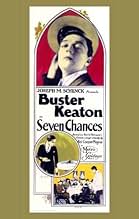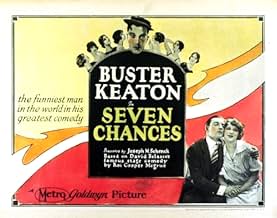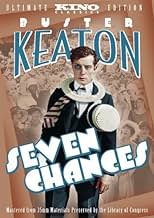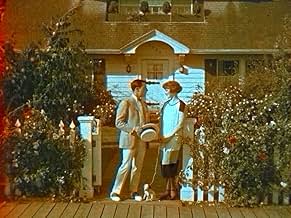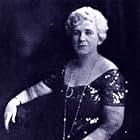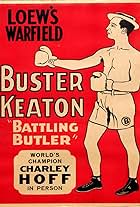A man learns that he will inherit a fortune if he marries by 7PM that evening.A man learns that he will inherit a fortune if he marries by 7PM that evening.A man learns that he will inherit a fortune if he marries by 7PM that evening.
- Awards
- 1 win & 1 nomination total
Frances Raymond
- Her Mother
- (as Frankie Raymond)
Jean Arthur
- Miss Smith - Office Receptionist
- (uncredited)
Lori Bara
- Mother of Underage Girl
- (uncredited)
Rosalind Byrne
- Hat Check Girl
- (uncredited)
Featured reviews
Desperate for money to save his failing business, junior stockbroker Buster Keaton (as James "Jimmie" Shannon) is understandably pleased to learn his recently deceased grandfather has tentatively left him $7 million. In order to inherit the money, Mr. Keaton must get married by 7 pm. After a misunderstanding with girlfriend Ruth Dwyer (as Mary Jones), Keaton gets "Seven Chances" to propose, but each woman turns him down. When a newspaper article reveals Keaton's potential, every woman in the vicinity decides to pursue him. Keaton decides marrying Ms. Dwyer is the correct way to go, if he can get away from a landslide of eager women...
Lost on modern audiences is a moment when Keaton visits a theater to propose marriage to a showgirl, who we're told is Julian Eltinge; filmgoers in 1925 would have known this was a female impersonator. Another of Keaton's prospects in young Jean Arthur (as "Miss Smith"). The colorful opening gives "Seven Chances" a great start, but frequent "ethnic" humor is not funny. It's hard to believe Keaton considered this film substandard. Even before it gets going, it's a top quality production. There are enough chuckles before the famous chase scene, which really begins when Keaton falls asleep in church and the women start rushing to meet him.
******** Seven Chances (3/11/25) Buster Keaton ~ Buster Keaton, Ruth Dwyer, Snitz Edwards, T. Roy Barnes
Lost on modern audiences is a moment when Keaton visits a theater to propose marriage to a showgirl, who we're told is Julian Eltinge; filmgoers in 1925 would have known this was a female impersonator. Another of Keaton's prospects in young Jean Arthur (as "Miss Smith"). The colorful opening gives "Seven Chances" a great start, but frequent "ethnic" humor is not funny. It's hard to believe Keaton considered this film substandard. Even before it gets going, it's a top quality production. There are enough chuckles before the famous chase scene, which really begins when Keaton falls asleep in church and the women start rushing to meet him.
******** Seven Chances (3/11/25) Buster Keaton ~ Buster Keaton, Ruth Dwyer, Snitz Edwards, T. Roy Barnes
I'm sorry to hear that Keaton didn't care for this film, because it was a truncated version of this film that introduced me to Buster Keaton when I was about six.
When the film gets going, it really takes off and I mean off the ground. The big chase in this film is a joy to see.
This is a must see Keaton film.
When the film gets going, it really takes off and I mean off the ground. The big chase in this film is a joy to see.
This is a must see Keaton film.
True love takes a lot of work - but this is ridiculous!
Jimmie Shannon (Buster Keaton) is a partner in a brokerage who can't quite bring himself to propose to Mary (Ruth Dwyer), the only woman he loves. Then, his business facing ruin, he discovers he stands to inherit a fortune if only he gets married that day. He proposes to Mary, but she's put off by his apparent insincerity. So Jimmie is left to find a woman, any woman, who will marry him. Will love prevail?
The film is an odd one for Keaton, starting off with a brief color sequence (in 1925) and moving quite slowly for Buster through the first third. The story was one Keaton had handed to him, rather than one he worked on himself, and feels at times like a "ladies' picture," focusing as it does on Jimmie's frustrated feelings and Mary's unhappiness.
For a while, Buster's not even the main laugh-getter in the film. For a while, he plays a kind of straight man to troll-visaged Snitz Edwards, playing the lawyer bringing the news of Jimmie's inheritance. Snitz chases after Jimmie and his partner, who think he's a process-server and dodge him, but Snitz prevails. Buster still pines for Mary, saying he can love no other woman (which she happens to hear over a telephone connection, changing her mind), but agrees to bring to bring a woman to church before the deadline out of loyalty to his partner.
"In case two show up, I'll marry the other," Snitz declares.
There are other oddities about "Seven Chances," like racial humor (Jimmie almost proposes to a black woman; a blackface actor plays a thick-headed hired hand) and the "Saphead"-style character Buster plays. It would seem like a lesser Keaton for that, but instead emerges as a masterwork of pacing and narrative. Just as you begin to settle in to "Seven Chances" tea-cozy aesthetic, it ramps things up for one of the great double-rally endings in movie history.
There's also a charming sequence where Jimmie tries to find a bride among a list of female members of his country club, the "seven chances" of the film's title. He burns through those chances in six minutes, and then gets rejected by a receptionist (Jean Arthur) and a hat-check girl (Rosalind Byrne) for good measure. The sequence plays with set design and framing to keep you always wondering as to what will happen next.
One amazing thing about the film you might not notice is the clever use of panning. Camera pans were still fairly new in cinema; framing was often stationary. But Buster is always in motion, and the camera moves with him. One clever shot, of Buster finding a turtle attached to his tie, apparently employs a treadmill in order to achieve an overhead camera angle.
The gags here keep coming, and give "Seven Chances" the feel of a classic Keaton short. Except there's a real story here to be told, and the humor always works to move the ideas forward. It's a classic demonstration of Keaton's ingenuity - even if he didn't have a hand in the film's conception or writing he directed it, and it shows - as well as his ability to find as many ways of making you laugh in as little time as possible.
Jimmie Shannon (Buster Keaton) is a partner in a brokerage who can't quite bring himself to propose to Mary (Ruth Dwyer), the only woman he loves. Then, his business facing ruin, he discovers he stands to inherit a fortune if only he gets married that day. He proposes to Mary, but she's put off by his apparent insincerity. So Jimmie is left to find a woman, any woman, who will marry him. Will love prevail?
The film is an odd one for Keaton, starting off with a brief color sequence (in 1925) and moving quite slowly for Buster through the first third. The story was one Keaton had handed to him, rather than one he worked on himself, and feels at times like a "ladies' picture," focusing as it does on Jimmie's frustrated feelings and Mary's unhappiness.
For a while, Buster's not even the main laugh-getter in the film. For a while, he plays a kind of straight man to troll-visaged Snitz Edwards, playing the lawyer bringing the news of Jimmie's inheritance. Snitz chases after Jimmie and his partner, who think he's a process-server and dodge him, but Snitz prevails. Buster still pines for Mary, saying he can love no other woman (which she happens to hear over a telephone connection, changing her mind), but agrees to bring to bring a woman to church before the deadline out of loyalty to his partner.
"In case two show up, I'll marry the other," Snitz declares.
There are other oddities about "Seven Chances," like racial humor (Jimmie almost proposes to a black woman; a blackface actor plays a thick-headed hired hand) and the "Saphead"-style character Buster plays. It would seem like a lesser Keaton for that, but instead emerges as a masterwork of pacing and narrative. Just as you begin to settle in to "Seven Chances" tea-cozy aesthetic, it ramps things up for one of the great double-rally endings in movie history.
There's also a charming sequence where Jimmie tries to find a bride among a list of female members of his country club, the "seven chances" of the film's title. He burns through those chances in six minutes, and then gets rejected by a receptionist (Jean Arthur) and a hat-check girl (Rosalind Byrne) for good measure. The sequence plays with set design and framing to keep you always wondering as to what will happen next.
One amazing thing about the film you might not notice is the clever use of panning. Camera pans were still fairly new in cinema; framing was often stationary. But Buster is always in motion, and the camera moves with him. One clever shot, of Buster finding a turtle attached to his tie, apparently employs a treadmill in order to achieve an overhead camera angle.
The gags here keep coming, and give "Seven Chances" the feel of a classic Keaton short. Except there's a real story here to be told, and the humor always works to move the ideas forward. It's a classic demonstration of Keaton's ingenuity - even if he didn't have a hand in the film's conception or writing he directed it, and it shows - as well as his ability to find as many ways of making you laugh in as little time as possible.
Contrary to what you may have read, "Seven Chances" (1925) was made before Buster Keaton signed with MGM and relinquished artistic control over his own films. His gifts of extraordinary agility, timing, and visualizing the comic potential in the most mundane situations are everywhere in evidence.
The plot of "Seven Chances" is ancient. A young bachelor stands to inherit millions if he can find a bride by a certain day and marry at a certain hour. The date is invariably the same as the day the will is read, and in the hands of Keaton, his writers and cast, the comic possibilities are brilliantly exploited. The same premise was the basis for at least three other films before Keaton's, and was remade (abysmally -- from what I've read) as "The Bachelor" with Chris O'Donnell in 1999. The chain of events that flows from news of the inheritance just builds and builds over the course of the film, the gags growing increasingly clever as time grows shorter. "Seven Chances" clocks in at less than an hour, but the final 15 minutes (which Buster Keaton reportedly reworked several times) are among the most hilarious in all of silent film, perhaps in the history of screen comedy.
Initially, only Buster, his business partner (T. Ray Brown) and the lawyer (Snitz Edwards, who was so terribly homely he was cute) are aware of the dilemma. After Buster botches a proposal to his longtime girlfriend, (Ruth Dwyer), he pops the question to several more female acquaintances, with predictably embarrassing results. It is then that Brown and Edwards (unbeknownst to Buster) decide to place a newspaper announcement advertising his plight.
Once the newspapers hit the streets, the chase is on. Keaton is pursued through 1920s Los Angeles by dozens, then scores, then seemingly hundreds of would-be brides. They come in all ages, shapes and sizes, makeshift veils trailing after them. No obstacle is too great in their pursuit to beat out each other for the prize of marriage to a man they don't even know, and Buster throws out plenty of roadblocks in his wake.
In 1979, Walter Kerr wrote the definitive book on silent comedies, "The Silent Clowns." One of the jacket blurbs reads, "I found myself laughing out loud at routines from movies I have never seen." I don't have Kerr's gift, but I can tell you that "Seven Chances" is the most consistently funny movie Buster Keaton ever made. All of his movies include inventive sight gags, but "Seven Chances," more than most of Buster's movies, relies on character comedy as well as situational comedy for its humor. And it scores a bull's eye on both. A sheer delight.
The plot of "Seven Chances" is ancient. A young bachelor stands to inherit millions if he can find a bride by a certain day and marry at a certain hour. The date is invariably the same as the day the will is read, and in the hands of Keaton, his writers and cast, the comic possibilities are brilliantly exploited. The same premise was the basis for at least three other films before Keaton's, and was remade (abysmally -- from what I've read) as "The Bachelor" with Chris O'Donnell in 1999. The chain of events that flows from news of the inheritance just builds and builds over the course of the film, the gags growing increasingly clever as time grows shorter. "Seven Chances" clocks in at less than an hour, but the final 15 minutes (which Buster Keaton reportedly reworked several times) are among the most hilarious in all of silent film, perhaps in the history of screen comedy.
Initially, only Buster, his business partner (T. Ray Brown) and the lawyer (Snitz Edwards, who was so terribly homely he was cute) are aware of the dilemma. After Buster botches a proposal to his longtime girlfriend, (Ruth Dwyer), he pops the question to several more female acquaintances, with predictably embarrassing results. It is then that Brown and Edwards (unbeknownst to Buster) decide to place a newspaper announcement advertising his plight.
Once the newspapers hit the streets, the chase is on. Keaton is pursued through 1920s Los Angeles by dozens, then scores, then seemingly hundreds of would-be brides. They come in all ages, shapes and sizes, makeshift veils trailing after them. No obstacle is too great in their pursuit to beat out each other for the prize of marriage to a man they don't even know, and Buster throws out plenty of roadblocks in his wake.
In 1979, Walter Kerr wrote the definitive book on silent comedies, "The Silent Clowns." One of the jacket blurbs reads, "I found myself laughing out loud at routines from movies I have never seen." I don't have Kerr's gift, but I can tell you that "Seven Chances" is the most consistently funny movie Buster Keaton ever made. All of his movies include inventive sight gags, but "Seven Chances," more than most of Buster's movies, relies on character comedy as well as situational comedy for its humor. And it scores a bull's eye on both. A sheer delight.
I love Seven Chances as much if not more than any of Keaton's other features, even if it does not enjoy the same reputation as The General or Sherlock, Jr. Using the sure-fire concept of a man who must take a wife or lose a fortune, Buster builds and executes one of his greatest extended gag sequences -- the chase of the reluctant groom by the army of brides. The first sections of the film detail Buster's inability to get anyone to take his proposal of marriage seriously, and then Buster pulls out all the stops on the famine to feast prospect once scores of women of all shapes and sizes begin to hunt down our hero while dressed in their wedding gowns. Seven Chances completely capitalizes on its comic potential, and Buster offers up another unbelievable tour de force of superb movie making.
Did you know
- TriviaBuster Keaton had this project foisted upon him by producer Joseph M. Schenck, who had bought the rights to the hit Broadway show. Keaton later called it his least favorite feature and tried to keep film historian Raymond Rohauer from restoring the only known copy of the movie.
- GoofsJust as the horde of would-be brides overruns the college football game, one of the players can be seen throwing himself to the ground, already pretending to be trampled.
- Quotes
Title Card: By the time Jimmie had reached the church, he had proposed to everything in skirts, including a Scotchman.
- ConnectionsFeatured in 4 Clowns (1970)
- How long is Seven Chances?Powered by Alexa
Details
Box office
- Gross worldwide
- $268
- Runtime56 minutes
- Color
- Sound mix
- Aspect ratio
- 1.33 : 1
Contribute to this page
Suggest an edit or add missing content


![Watch Trailer [OV]](https://m.media-amazon.com/images/M/MV5BNTUxNzY1MzYtN2MzMS00Yzc0LWIyNmMtYTE1ZmJhYTlkMDI4XkEyXkFqcGdeQXRyYW5zY29kZS13b3JrZmxvdw@@._V1_QL75_UX500_CR0,0,500,281_.jpg)


